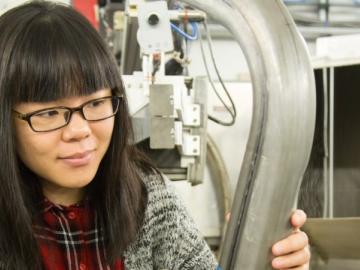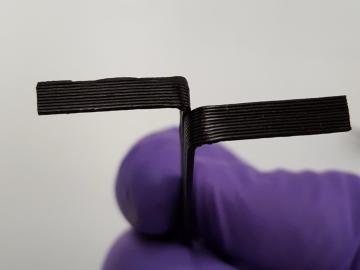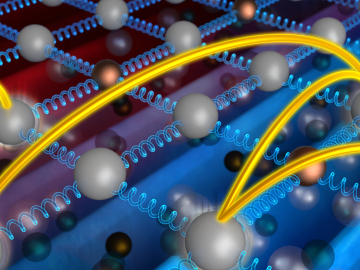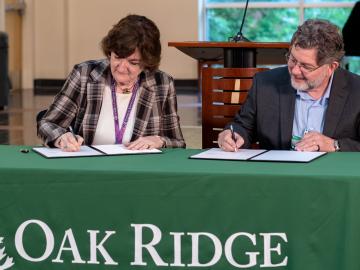
Filter News
Area of Research
- (-) Clean Energy (49)
- (-) Materials (54)
- Advanced Manufacturing (3)
- Biological Systems (2)
- Biology and Environment (4)
- Building Technologies (2)
- Climate and Environmental Systems (2)
- Computational Biology (1)
- Energy Frontier Research Centers (1)
- Fossil Energy (1)
- Fuel Cycle Science and Technology (1)
- Fusion and Fission (1)
- Fusion Energy (1)
- Isotopes (1)
- National Security (4)
- Neutron Science (27)
- Nuclear Science and Technology (14)
- Nuclear Systems Modeling, Simulation and Validation (1)
- Sensors and Controls (2)
- Supercomputing (23)
News Topics
- 3-D Printing/Advanced Manufacturing (4)
- Bioenergy (2)
- Biology (1)
- Biomedical (3)
- Chemical Sciences (1)
- Climate Change (1)
- Composites (3)
- Computer Science (2)
- Critical Materials (1)
- Cybersecurity (1)
- Energy Storage (2)
- Environment (2)
- Fusion (1)
- Grid (3)
- Isotopes (5)
- Materials Science (7)
- Mercury (1)
- Microscopy (4)
- Nanotechnology (6)
- Neutron Science (3)
- Nuclear Energy (2)
- Partnerships (1)
- Physics (4)
- Polymers (3)
- Security (2)
- Space Exploration (2)
- Summit (1)
- Transportation (5)
Media Contacts

As leader of the RF, Communications, and Cyber-Physical Security Group at Oak Ridge National Laboratory, Kerekes heads an accelerated lab-directed research program to build virtual models of critical infrastructure systems like the power grid that can be used to develop ways to detect and repel cyber-intrusion and to make the network resilient when disruption occurs.

Brixon, Inc., has exclusively licensed a multiparameter sensor technology from the Department of Energy’s Oak Ridge National Laboratory. The integrated platform uses various sensors that measure physical and environmental parameters and respond to standard security applications.


An Oak Ridge National Laboratory–led team has developed super-stretchy polymers with amazing self-healing abilities that could lead to longer-lasting consumer products.

A scalable processing technique developed by Oak Ridge National Laboratory uses plant-based materials for 3D printing and offers a promising additional revenue stream for biorefineries.


When Michael Starke leaves the lab each day, he continues his work, in a sense, at home. The power systems engineer is developing methods to precisely control building electrical loads—and in his off hours, he has automated his own home with upwards of 90 smart devices to manage everything from heat...


A tiny vial of gray powder produced at the Department of Energy’s Oak Ridge National Laboratory is the backbone of a new experiment to study the intense magnetic fields created in nuclear collisions.

StealthCo, Inc., an Oak Ridge, Tenn.-based firm doing business as Stealth Mark, has exclusively licensed an invisible micro-taggant from the Department of Energy’s Oak Ridge National Laboratory. The anticounterfeiting technology features a novel materials coding system that uses an infrared marker for identification.


